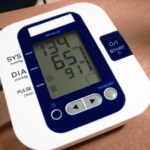Machine tending automation is the process of tending machines, mostly Computer Numerical Control (CNC) machines. The tending process involves loading raw materials into a CNC machine and unloading finished parts.
Most people get confused when comparing machine handling and machine tending. The difference between machine handling and robotic machine tending is that the latter is a process that is more demanding. This is why collaborative robots are perfect for these tasks.

For robotic machine tending to be done, a collaborative robot needs to be able to communicate with a CNC machine. The robotic arm is required to have the ability to perform several functions for each application.
Common machine tending applications using robotic include.
- Stamping, punching, trimming and forging.
- Milling and turning.
- Injection molds.
- Grinding.
- Welding.
- Compression molds.
Each tending process using robotics comprises of different specific processes from this list, with loading and unloading of parts being the most common function.
The top 7 benefits of machine tending using robotics
Easy programmability
Before the introduction of cobots, traditional robots required programming expertise and a lot of time to setup. This made it too much work to involve these robots in machine tending processes. Today, the advancements in robot technology have seen the use of collaborative robots, which are easy to program.
To fully program and automate cobots for your machine tending shop, you only require dedicating an hour of your time. The best part is that collaborative robots can be programmed by anyone working in the shop by following simple manufacturer guidelines.
Improved uptime
Collaborative robots can work continuously without the need for breaks with maximum and uniform accuracy at a constant speed. The only time a collaborative robot is not working is when undergoing general maintenance.
This productivity of a collaborative robot is not limited by manual labor as it can also be used for computerized processes. This causes a gain in uptime, which leads to improved productivity by boosting throughput.
Easy installation guidelines
Collaborative robots are an instant way of improving service delivery in any machine tending shop. With traditional robots, the installation process can take days or even weeks.
The installation of collaborative robots and automation for CNC machines only takes an hour. This means that your shop can have a collaborative robot up and running on the same day it is purchased.
High repeatability and accuracy advantage
Collaborative robots are created and programmed to perform repetitive tasks continuously, with accuracy. With these modern-day robots, a machine tending plant can produce parts around the clock without compromising on quality.
With collaborative robots, your industry can increase output and reduce the margin of error to zero in all processes. This way, there is minimized wastage of resources in all production processes.
Frees employees for other meaningful tasks
Collaborative robots are made to work alongside human workers, making it possible for the machine to be set up in the same working space with human workers in a tending shop.
Since collaborative robots are used for repetitive, monotonous, tedious, dirty, and unsafe tasks, human workers are left with more time to attend to more important tasks in the shop, such as maintenance, quality checks, and customer services. By offering support in machine tending jobs, employees can enjoy their work more.
Reduction in cycle times
Even though the fabrication process in a tending shop is automatic, the CNC machines need to be fed with parts, usually a task given to human workers.
They are also tasked with pacing the production process. With collaborative robots for machine tending, a shop can save time spent on each cycle by reducing the workload done by humans.
By saving a few minutes in each cycle, this can translate into a lot of time and significantly boost production. The best part is that a robot-tending machine can work 24 hours a day, seven days a week.
It is cheaper
It is possible to significantly reduce Labor costs in a machine tending shop when processes are automated using robots. Also, machine tending collaborative robots are less expensive than a specialty-feeding device.
Join 25,000+ smart readers—don’t miss out!






